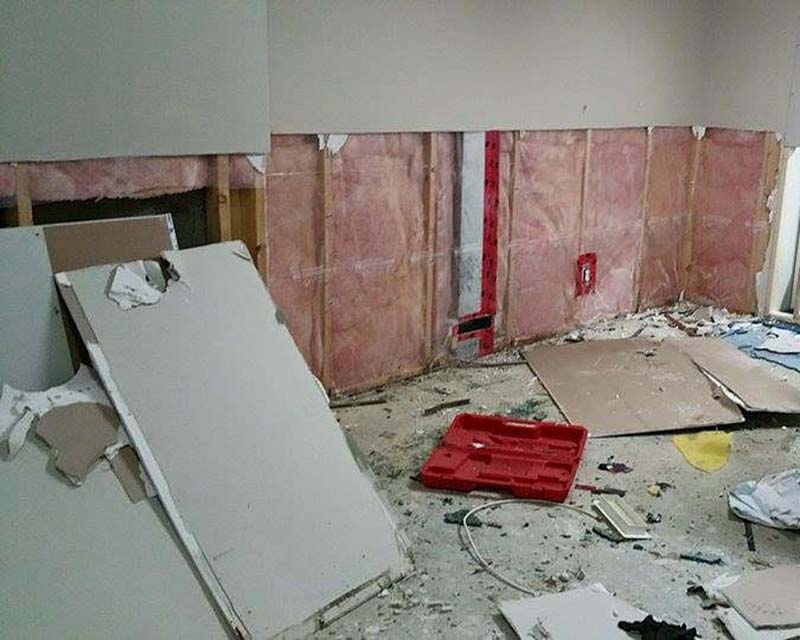
Last month a flood that no one could have predicted hit Chestermere, Langdon and other areas. Similar to the flooding of Calgary and High River in 2013, there was nothing residents could do but stand and watch and wonder when it would end.
As the rain clouds slowly moved away, Chestermere neighbourhoods began to fill up with restoration and disaster vehicles, soggy drywall and carpet piled up on curbs and the clean-up began.
Since then, the attention has shifted now into the rebuilding of those destroyed basements. But, there are a few things that should be thought about before jumping into your renovations. The City of Chestermere even issued a statement saying, “Alberta Health Services advises any homeowners affected by flooding to remember that any new construction should not be closed until after all structural components are properly cleaned, disinfected and dry (and that process can take several weeks)”.
Alberta Health Services advises that before you start any remediation or construction work on walls, be sure you know which are load-bearing, and consult a contractor for guidance on structural safety. Remove all wet or soaked dry wall, clean remaining dry wall with warm water and soap and then sanitize using a mild bleach solution. It is also crucial to remove any wet material, such as insulation, from the interior wall cavity and sanitize those areas as well. It is strongly recommended that you use a dehumidifier to dry your walls and basement thoroughly before any rebuilding moves ahead.
So then what? You’ve ripped out carpet, drywall and cleaned up the mess and the next logical step is to rebuild. Professionals say that one of the most important steps to make sure that everyone is 100% dry. Rebuilding a wet basement is just asking for mould to start growing. Health problems seen with high levels of airborne mould spores include allergic reactions, asthma episodes, irritations of the eye, nose and throat, sinus congestion, and other respiratory problems. Being exposed to mould can cause irritant or allergic responses. These can include: wheezing or trouble breathing, nose, eye, or throat irritation, nasal or sinus congestion, a dry, hacking cough, skin irritation or rashes.
Once your basement is dry and you’re ready to move ahead with construction, it is equally important to decide what to rebuild with. We consulted with AGT Products Inc. who led us to Building Science Corporation. According to Building Science Corporation, that pink fuzzy insulation that so many homes and especially basements are filled with is actually not a healthy material to use. They claim that this type of insulation meets minimum code requirements and has a very poor moisture control level. They also state that the layer of plastic vapor barrier that is then typically installed between the insulation and the drywall makes for the perfect mould incubator.
With many different options for what you use to build your basement with, always consult with a licensed professional. Here are some steps you can take to prevent mould growth in your basement:
• Try and keep some form of ventilation in your basement
• Any soft items that got wet from flooding remove immediately
• Verify that the vent for your clothes dryer is releasing air outside of your home
• Use pipe sleeves, fiberglass, or other insulation material to wrap your pipes or cover your windows to prevent condensation in cold or freezing outdoor temperatures.
• Make sure that rainwater is directed away from your home and basement.
• Check to see if your outside grounds slope away from your home
• Don’t keep plants in your basement.
• Vacuum all the surfaces in your basement using a vacuum with a High-Efficiency Particulate Air (HEPA) filter
With all the devastation that the flooding brought to Chestermere, Langdon and surrounding areas, imagine rushing your rebuild and then discovering that all your hard work and money was just flushed away when mould sets in. For more information on mould, please contact Alberta Health Services and make sure that you build your healthiest basement.






